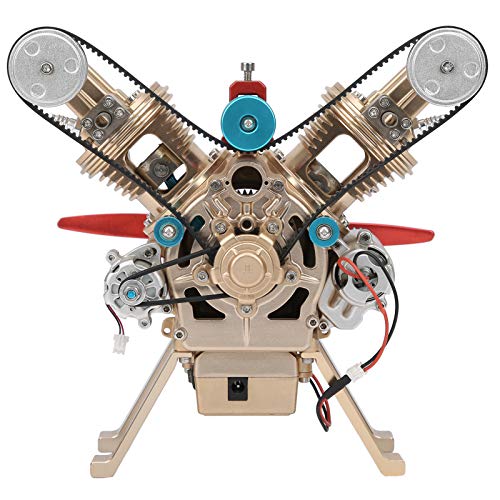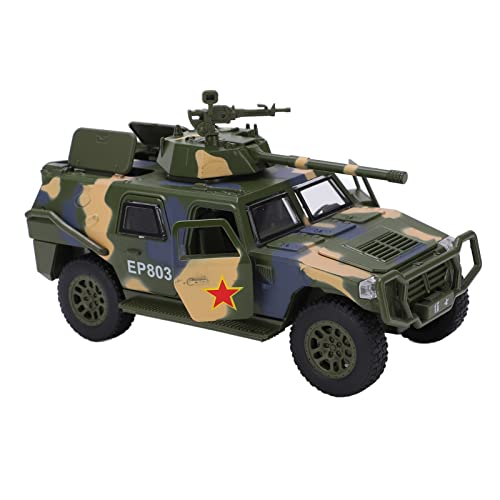You are using an out of date browser. It may not display this or other websites correctly.
You should upgrade or use an alternative browser.
You should upgrade or use an alternative browser.
USS MONITOR SIDE LEVER ENGINE
- Thread starter wce4
- Start date

Help Support Home Model Engine Machinist Forum:
This site may earn a commission from merchant affiliate
links, including eBay, Amazon, and others.
It is looking very good so far.
.
.
Thank you GreenTwin.It is looking very good so far.
.
Part # 46-CRANK ROD BEARING END x 2 completed
Part # 47-CON-ROD x 2 completed
Part # 48-CON-ROD YOKE x 2 completed
Part # 49-CON-ROD YOKE PIN x 2 completed
Improving doing single point threading on the lathe, it's not as intimidating as when I started this project.
Not to happy the way Part # 46 turnout, may need to remachine two new ones ?


Part # 47-CON-ROD x 2 completed
Part # 48-CON-ROD YOKE x 2 completed
Part # 49-CON-ROD YOKE PIN x 2 completed
Improving doing single point threading on the lathe, it's not as intimidating as when I started this project.
Not to happy the way Part # 46 turnout, may need to remachine two new ones ?


You are making that look easy, but I know it is not.
.
.

$99.99
$109.99
AmTech300 - Boiler Treatment Professional Strength (Rust Inhibitor For Outdoor Wood Boilers)
Alternative Heating & Supplies

$99.99
AHS Outdoor Wood Boiler Yearly Maintenance Kit with Water Treatment - ProTech 300 & Test Kit
Alternative Heating & Supplies

$519.19
$699.00
FoxAlien Masuter Pro CNC Router Machine, Upgraded 3-Axis Engraving All-Metal Milling Machine for Wood Acrylic MDF Nylon Carving Cutting
FoxAlien Official

$39.99
$49.99
Sunnytech Low Temperature Stirling Engine Motor Steam Heat Education Model Toy Kit For mechanical skills (LT001)
stirlingtechonline

$188.98
TM NEXDYNAMI RE41157 Water Pump Compatible With/Replacement For/John Deere 6200 7400 6300 6600 6500 6400 7220 7600 7200 RE41157
VIVID MARKET CORPORATION

$403.09
DM14 Engine Build Kit, Metal Engine Build Model Great Metal Material for Engineer for Factory
Easoger Official

$45.99
Sunnytech Mini Hot Air Stirling Engine Motor Model Educational Toy Kits Electricity HA001
stirlingtechonline

$59.99
Sunnytech Hot Air Stirling Engine Motor Model Educational Toy Electricity Generator Colorful LED (SC001)
stirlingtechonline

$190.00
$254.99
Genmitsu CNC 3018-PRO Router Kit GRBL Control 3 Axis Plastic Acrylic PCB PVC Wood Carving Milling Engraving Machine, XYZ Working Area 300x180x45mm
SainSmart Official

$156.90 ($1.40 / oz)
Replacement Combustion Chamber Kit, Burnham V8 and V8H, 1-6 Sec, 108136-01, 1129
Lynn Manufacturing

$94.99
$109.99
AHS Woodmaster 4400 Maintenance Kit for Outdoor Wood Boiler Treatment
Alternative Heating & Supplies
The reason why is due to the contributions of individuals such as yourself, Rdean33422, Shelton,You are making that look easy, but I know it is not.
.
Richard Hed, minh-thanh, Brian Rupnow, Steamchick, and many other individuals on this forum.
Thank you !
Last edited:
The majority of my Labor Day weekend was spent working in the workshop, with the exception of Sunday when I spent time with my granddaughter and family.
Part # 53-ECCENTRIC STRAP x 2 completed
Part # 54-ECCENTRIC STRAP EXTENSION x 2 completed
Part # 56-ECCENTRIC ROD END x 2 completed


To finish Part #-55-ECCENTRIC ROD and Part #61-SLIDE VALVE ROD, I need to acquire some 1/8" rod.
Thanks for taking a peak.
Part # 53-ECCENTRIC STRAP x 2 completed
Part # 54-ECCENTRIC STRAP EXTENSION x 2 completed
Part # 56-ECCENTRIC ROD END x 2 completed


To finish Part #-55-ECCENTRIC ROD and Part #61-SLIDE VALVE ROD, I need to acquire some 1/8" rod.
Thanks for taking a peak.
Acquire some 1/8" dia. rod over the week end so ....
Part # 55-ECCENTRIC ROD x 2 completed
Part # 61-SLIDE VALVE ROD x 2 completed
Part # 66-LH-VALVE ROCKER PLATE PIN completed
Part # 67-RH-VALVE ROCKER PLATE PIN completed
Part # 68-RH-VALVE ROCKER PLATE PIN SPACER completed


The excitement is escalating. I am eagerly anticipating seeing this engine run for the first time.

Part # 55-ECCENTRIC ROD x 2 completed
Part # 61-SLIDE VALVE ROD x 2 completed
Part # 66-LH-VALVE ROCKER PLATE PIN completed
Part # 67-RH-VALVE ROCKER PLATE PIN completed
Part # 68-RH-VALVE ROCKER PLATE PIN SPACER completed


The excitement is escalating. I am eagerly anticipating seeing this engine run for the first time.

Part # 58-SLIDE VALVE x 2 completed
Part # 59-SLIDE VALVE BUCKLE x 2 completed
After that, all of the main components are finished except for one set of SLIDE VALVE ROD ENDS.. Part # 60


Part # 59-SLIDE VALVE BUCKLE x 2 completed
After that, all of the main components are finished except for one set of SLIDE VALVE ROD ENDS.. Part # 60


Richard Hed
Well-Known Member
- Joined
- Nov 23, 2018
- Messages
- 2,620
- Reaction score
- 676
During the war, there were several Monitors built. Were all the engines the same? I would thimpfk that Petersen would have made changes to improve them.
The U.S. Navy built more than 60 monitor-type vessels during the Civil War.During the war, there were several Monitors built. Were all the engines the same? I would thimpfk that Petersen would have made changes to improve them.
Richard Hed
Well-Known Member
- Joined
- Nov 23, 2018
- Messages
- 2,620
- Reaction score
- 676
I didn't k now it was that many. Surely there would have been improvement?The U.S. Navy built more than 60 monitor-type vessels during the Civil War.
Richard Carlstedt
Well-Known Member
Yes, there were 60 Monitors built , but there were many changes .
None were identical to USS Monitor however. When the battle was over, the US Navy immediately ordered 10 more (called the Passaic Class) -They had rounded lower hulls ( Monitor was flat and straight like a dory) and were slightly longer and the engine"s valve chest was changed to make casting easier. The next group (s) after the 10 were even larger engines as were the ships as they mounted two turrets as the Navy redesigned the ships and did not consult with John Ericsson. The last ten were disasters and could not even float and support a turret. Ericsson was a master of water displacement calculations and the Navy disregarded his input and those last ones never saw service. There was only one true Monitor in size, engine configuration and cannon size. Monitor had two 11 inch Dahlgrens and the later ones had both 11 and 15 inch cannon or just 15 inch
Rich
None were identical to USS Monitor however. When the battle was over, the US Navy immediately ordered 10 more (called the Passaic Class) -They had rounded lower hulls ( Monitor was flat and straight like a dory) and were slightly longer and the engine"s valve chest was changed to make casting easier. The next group (s) after the 10 were even larger engines as were the ships as they mounted two turrets as the Navy redesigned the ships and did not consult with John Ericsson. The last ten were disasters and could not even float and support a turret. Ericsson was a master of water displacement calculations and the Navy disregarded his input and those last ones never saw service. There was only one true Monitor in size, engine configuration and cannon size. Monitor had two 11 inch Dahlgrens and the later ones had both 11 and 15 inch cannon or just 15 inch
Rich
Richard Hed
Well-Known Member
- Joined
- Nov 23, 2018
- Messages
- 2,620
- Reaction score
- 676
is tere any way to find out more about the engines?Yes, there were 60 Monitors built , but there were many changes .
None were identical to USS Monitor however. When the battle was over, the US Navy immediately ordered 10 more (called the Passaic Class) -They had rounded lower hulls ( Monitor was flat and straight like a dory) and were slightly longer and the engine"s valve chest was changed to make casting easier. The next group (s) after the 10 were even larger engines as were the ships as they mounted two turrets as the Navy redesigned the ships and did not consult with John Ericsson. The last ten were disasters and could not even float and support a turret. Ericsson was a master of water displacement calculations and the Navy disregarded his input and those last ones never saw service. There was only one true Monitor in size, engine configuration and cannon size. Monitor had two 11 inch Dahlgrens and the later ones had both 11 and 15 inch cannon or just 15 inch
Rich
Richard Hed
Well-Known Member
- Joined
- Nov 23, 2018
- Messages
- 2,620
- Reaction score
- 676
I was searching for more info on these 60 ships and of course, there are subtle lies around the stuff I found. Never is there a mention of how the first ones failed--that is to be expected from people who want us all to believe we are invincible, nor other important details of how Ericsen was treated. So far in my search I have not found any of the other engines that had been improved.
I would like to see the way the navy changed from the Monitor class to a more modern shape of ship like the dreadnaughts. What really gets me is that the "monitors" are so low to the water that I would have thot they would try to get the deck further from the water. These ships apparently were part of the navy till the Spanish/American war. In the mean time, more modern ships had been developed--does anyone know when the Americans developed "more modern"?
I would like to see the way the navy changed from the Monitor class to a more modern shape of ship like the dreadnaughts. What really gets me is that the "monitors" are so low to the water that I would have thot they would try to get the deck further from the water. These ships apparently were part of the navy till the Spanish/American war. In the mean time, more modern ships had been developed--does anyone know when the Americans developed "more modern"?
Last edited:
Richard Carlstedt
Well-Known Member
Boy, that's a problem. I have spent the past 8 years writing a book on Monitor's Engine.
During that time, I did a complete drawing book on every part and it is available free on the internet for you to down load . Go to the bottom of the page on this link and you will see the drawings
https://homeshopmachinist.net/resources/downloads/
There is a Confederate book out covering their ironclads and it's called "Engines of the Rebellion"
No one has done the Monitors that I know of, and my focus was on the USS Monitor only.
Ericsson started it all in 1843 with the engine of the USS Princeton and his "Vibrating Piston Engine."
Then he created his Vibrating Lever Engines in the 1850's and Monitor's " Half Trunk Vibrating Lever Engine " in 1861 ( It's NOT a "side lever engine" , that's a NOAA misnomer ) Monitor had a 40 " bore and 22" Stroke, which stayed with the next ten Monitor type ships. Then because the ships were built bigger, they went to a 48 inch Bore (x 24" ?) and then went to a "V" configuration . The irony of this is The Monitor drew only 10 feet of water ( to fight in southern rivers ) and was a "Shallow draft warship"
But the navy ( like all government work) expanded it's size and displacement until they did not work.
Most people do not realize that The Monitor was the first "Battleship" and was not an"ironclad" although it is called that.
It was all steel construction , armor belted , steam powered- no sails, and had a rotating turret , a revolution in ship construction.
There may be more information somewhere in the National Archives on the other ships.
Rich
During that time, I did a complete drawing book on every part and it is available free on the internet for you to down load . Go to the bottom of the page on this link and you will see the drawings
https://homeshopmachinist.net/resources/downloads/
There is a Confederate book out covering their ironclads and it's called "Engines of the Rebellion"
No one has done the Monitors that I know of, and my focus was on the USS Monitor only.
Ericsson started it all in 1843 with the engine of the USS Princeton and his "Vibrating Piston Engine."
Then he created his Vibrating Lever Engines in the 1850's and Monitor's " Half Trunk Vibrating Lever Engine " in 1861 ( It's NOT a "side lever engine" , that's a NOAA misnomer ) Monitor had a 40 " bore and 22" Stroke, which stayed with the next ten Monitor type ships. Then because the ships were built bigger, they went to a 48 inch Bore (x 24" ?) and then went to a "V" configuration . The irony of this is The Monitor drew only 10 feet of water ( to fight in southern rivers ) and was a "Shallow draft warship"
But the navy ( like all government work) expanded it's size and displacement until they did not work.
Most people do not realize that The Monitor was the first "Battleship" and was not an"ironclad" although it is called that.
It was all steel construction , armor belted , steam powered- no sails, and had a rotating turret , a revolution in ship construction.
There may be more information somewhere in the National Archives on the other ships.
Rich
Richard Carlstedt
Well-Known Member
Richard, are you ever correct about the "lies " I would say 90 % of what is written about technical details in books is in error , wrong, or just lies because the author didn't know any better.
In my research I found the US Navy just 3 months after the great battle, had The Monitor's Bore wrong in official correspondence ! SO here is the problem , author A writes a book and is wrong, and author "B" repeats the error and then "C " does the same and no one checks the true source,, That is why I say that even the term" Side Lever" is preposterous. Side lever engines drove Paddle wheel steamers and never a screw propeller. Also they are vertical and yet someone in NOAA labeled the engine wrong and did not do their homework ...off soap box
Rich
In my research I found the US Navy just 3 months after the great battle, had The Monitor's Bore wrong in official correspondence ! SO here is the problem , author A writes a book and is wrong, and author "B" repeats the error and then "C " does the same and no one checks the true source,, That is why I say that even the term" Side Lever" is preposterous. Side lever engines drove Paddle wheel steamers and never a screw propeller. Also they are vertical and yet someone in NOAA labeled the engine wrong and did not do their homework ...off soap box
Rich
Richard Carlstedt
Well-Known Member
Last word maybe . Their was a Federal Investigation into "Shallow draft Monitors" in 1864 and Congress wanted to know why the ships were so heavy, that when the Turret was placed on the ship , it would sink.
We all know today that a cubic foot of water weighs about 62 pounds , so as you add weight to a ship, you must correspond with more displacement to handle the weight. Ericsson was a expert in this and forecasted that the "Iron" ship would have 18 inches of Freeboard when launched and it did , even though the newspapers earlier called it Ericsson's folly .. saying an all iron ship would sink . He even stood on the deck when launched to prove his calculations. But the navy had their own ideas which were not based on scientific fact
Rich
We all know today that a cubic foot of water weighs about 62 pounds , so as you add weight to a ship, you must correspond with more displacement to handle the weight. Ericsson was a expert in this and forecasted that the "Iron" ship would have 18 inches of Freeboard when launched and it did , even though the newspapers earlier called it Ericsson's folly .. saying an all iron ship would sink . He even stood on the deck when launched to prove his calculations. But the navy had their own ideas which were not based on scientific fact
Rich
Richard Carlstedt
Well-Known Member
Richard, The Best Book covering the Ironclads in my opinion is one by Donald Canney
and is Volume TWO of his "The Old Steam Navy" books.
Vol Two covers the Ironclads and The Monitor and subsequent monitors
Vol One is Sail Only
https://www.goodreads.com/series/337999-the-old-steam-navy
Rich
and is Volume TWO of his "The Old Steam Navy" books.
Vol Two covers the Ironclads and The Monitor and subsequent monitors
Vol One is Sail Only
https://www.goodreads.com/series/337999-the-old-steam-navy
Rich

























































